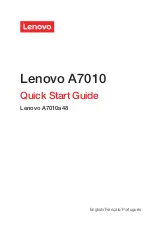
P
UB
.
42004-472B
A
UTO
-D
IAL
T
ELEPHONE
M
ANUAL
P
AGE
6 of 33
f:\standard ioms - current release\42004 instr. manuals\42004-472b.doc
01/15
General Installation Guidelines
As previously noted, the preferred system configuration is a dedicated telephone line per RED ALERT
®
Telephone. This is an actual
requirement
when using TMA in its typical “polling” operation.
Although it is not recommended, a RED ALERT
®
Telephone can share a telephone line with another
RED ALERT
®
Telephone with the understanding that if two or more telephones are put into use
simultaneously the line current could drop sufficiently to disconnect the telephone call completely.
Additional “line sharing” or “party line” configuration issues could include sporadic telephone operation,
difficulties with programming, or premature disconnection of calls. Special system features (voice mail,
call waiting, etc.) could also create problems if not disabled. Successful shared line operation will depend
on the line current, the length of the cable run, and the condition of the telephone cable.
N
OTE
:
A RED ALERT
®
Telephone should never be installed on the same telephone line as any
other (non-RED ALERT
®
) Telephone type.
When sharing a telephone line using TMA, the telephone must be scheduled to “call-in” instead of being
polled by TMA.
Security Hardware
All of the telephones described in this manual are vandal resistant. The front panel for each telephone
covered in this manual is attached to its enclosure with security screws. A GAI-Tronics Model 233-001
Security Screwdriver or Torx T-25 security head tip (sold separately) is required for installing the
telephone.
Conduit Installation Details
GAI-Tronics recommends installing telephone lines in conduit to protect against accidental damage and
vandalism. To prevent moisture from entering the enclosure, we strongly recommend the following:
Conduit should enter the enclosure from the bottom whenever possible.
Sealed fittings should be installed at all cable entry points.
Silicone sealant or equivalent should be applied around and inside all conduit entries to prevent
moisture ingress.









































